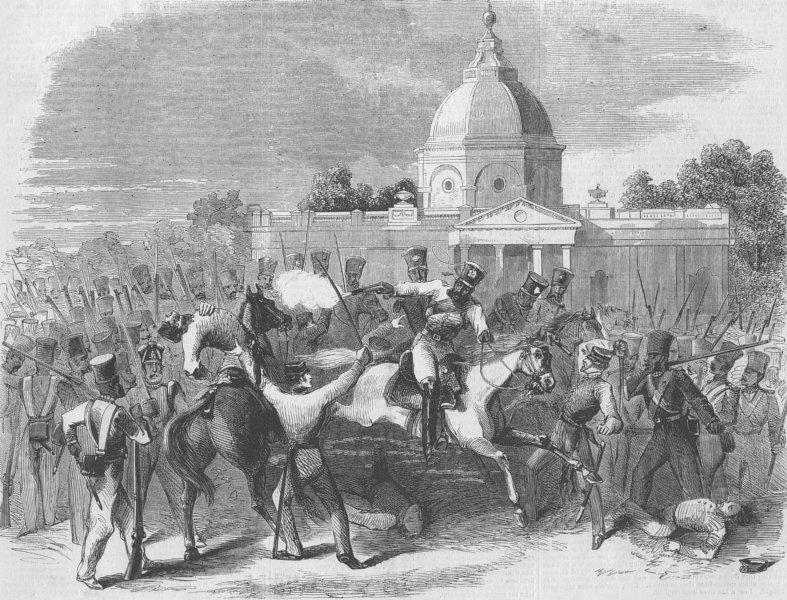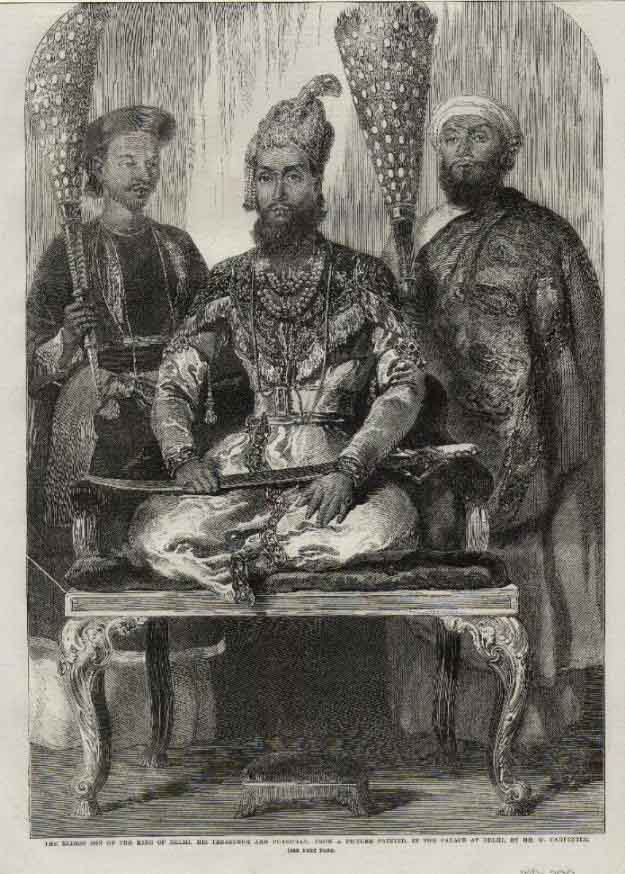


"The Eldest Son of the King of Delhi, His Treasurer, and Physician-- from a picture painted, in the palace at Delhi; by Mr. W. Carpenter," from the Illustrated London News, 1857; very large scans of: *the upper half*; *the lower half*
Source of text: http://www.harappa.com/engr/mughalson.html
(downloaded Dec. 1999)
Source of image: ebay, May 2009
From the article accompanying this image (emphasis added):
"These fine portraits have been engraved from a picture, painted in the Fort or Palace of Delhi, by Mr. William Carpenter. The group consists of the eldest son of the King of Delhi; his Treasurer, a Hindoo; and Physician, a Mussulman; each carrying a morhrchull, a brush made of peacocks tails, to drive away the flies--which duty is really performed by servants...."What part the titular King has actually played in the recent awful tragedy it is impossible as yet to say. Secretly, no doubt, he wished the destruction of the English, and some restoration of his family rule. But the fear of losing his life and pension, and the prestige of English domination, made it very doubtful that he was more than a mere passive tool in the hands of the insurgents, who had proclaimed not himself, but his son, as their leader; in fact, he sent a message to the Lieutenant-Governor of Agra, stating that he was not master of his actions.
"All this will, no doubt, be fully investigated at the close of the revolt. Even should this descendant of Timour and Auranzebe not be guilty, it is clear to us that the British, as in the case of the King of Oude, must take sufficient precautions against any future use of an Imperial authority through this august puppet. Every account from India clearly shows that it is the Mussulmans who are at the bottom of the insurrection, and that Hindoos are only the instruments. The King of Delhi may not have planned, or even have fomented, the insurrection. But a Prince with a historical name in Delhi, the focus of the Moslem fanaticism in India, without a single European regiment inside, is a placing of military and political capital in the hands of our enemies which, we are persuaded, will not soon happen again." (http://www.harappa.com/engr/mughalson.html)
[Just for interest: *the same figures*, now in very
different
company, used in a book on the history of costumes published by
Braun
and Schneider, Munich, 1880]
== Indian Routes index == Indian Routes sitemap == Glossary == FWP's main page ==